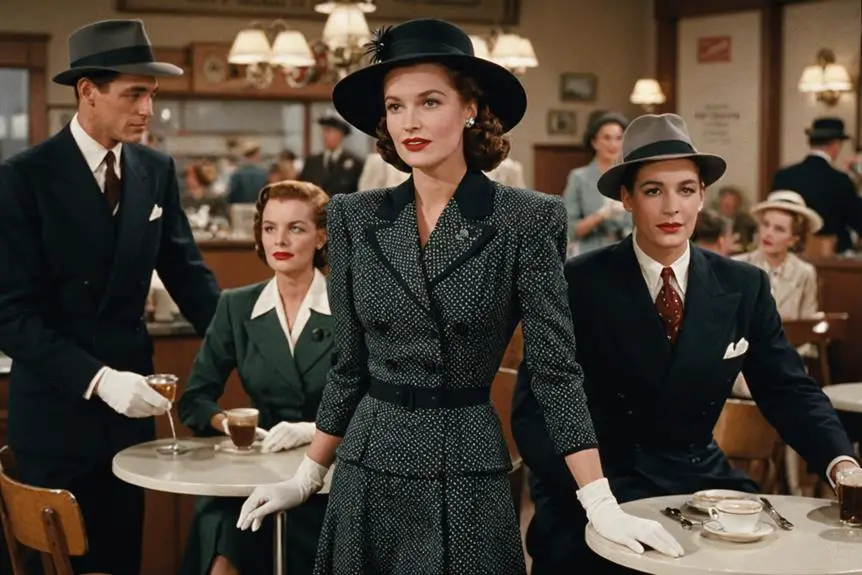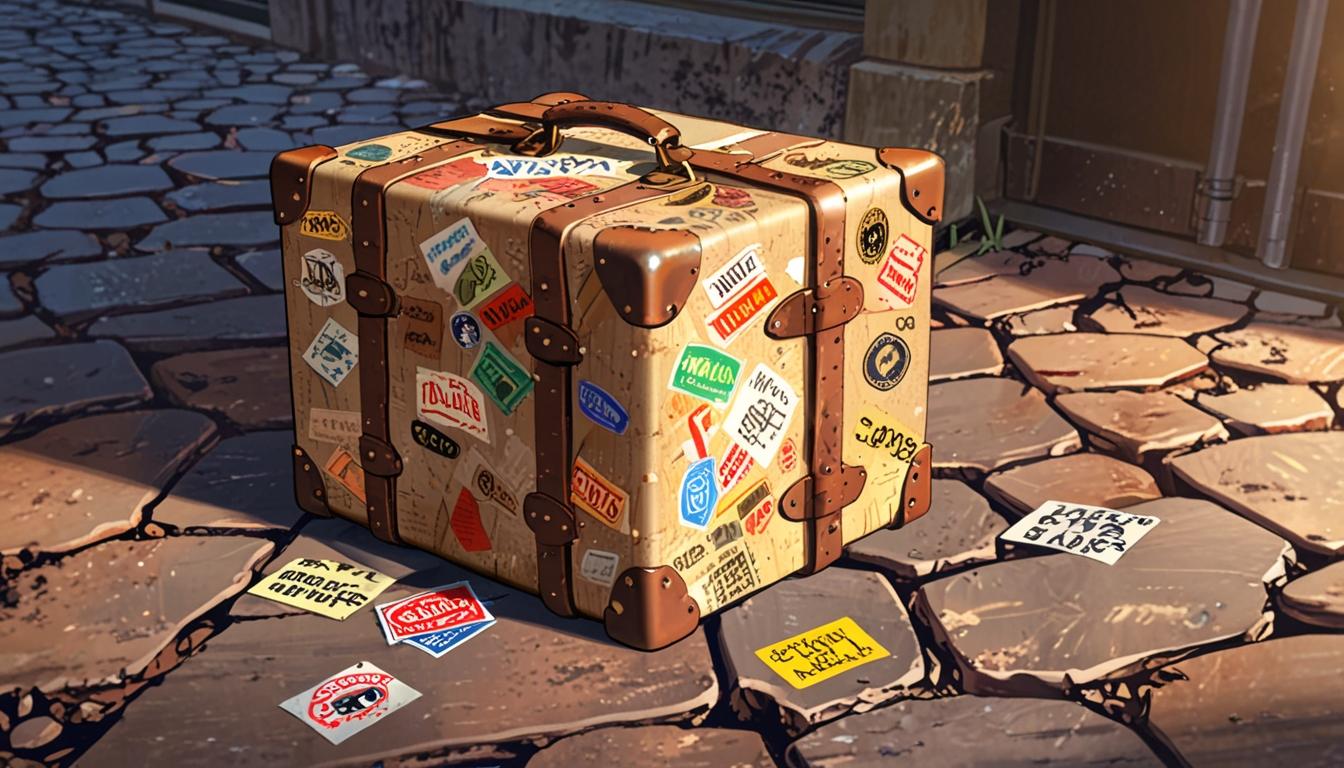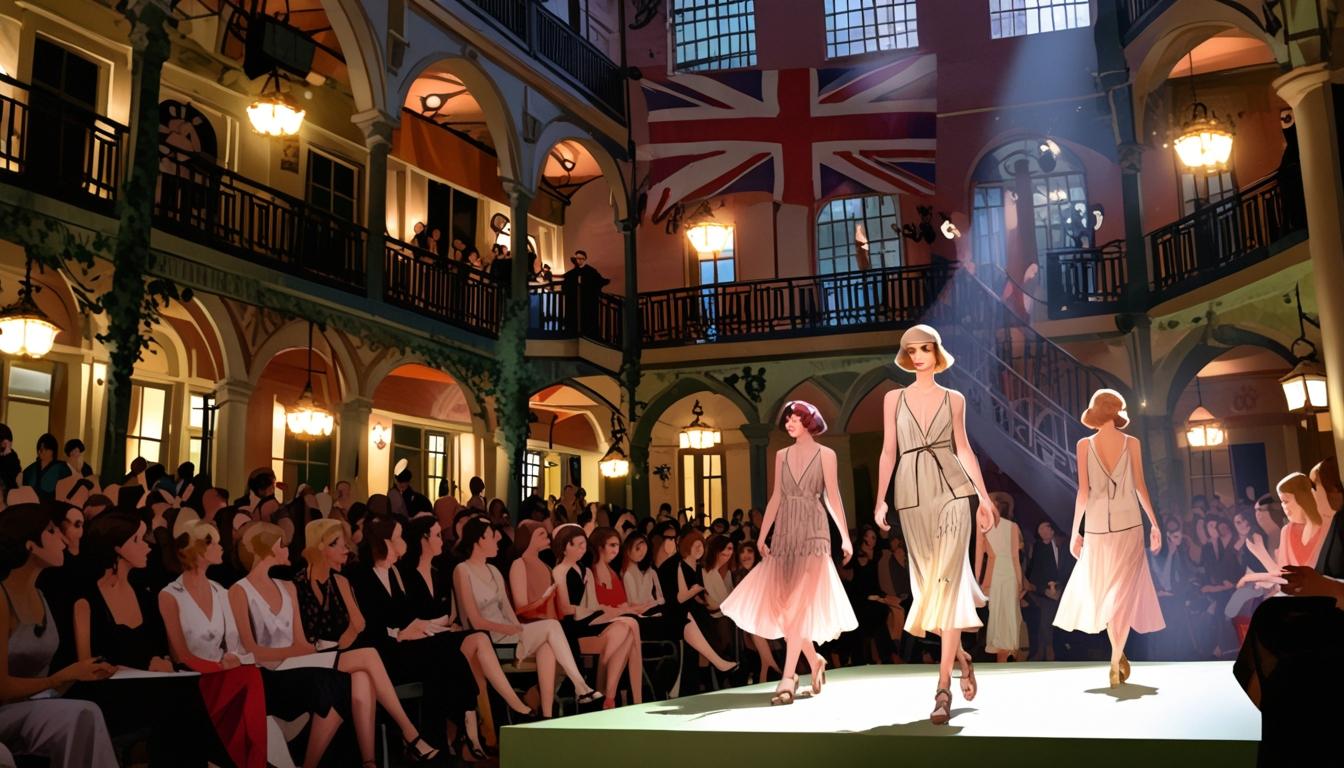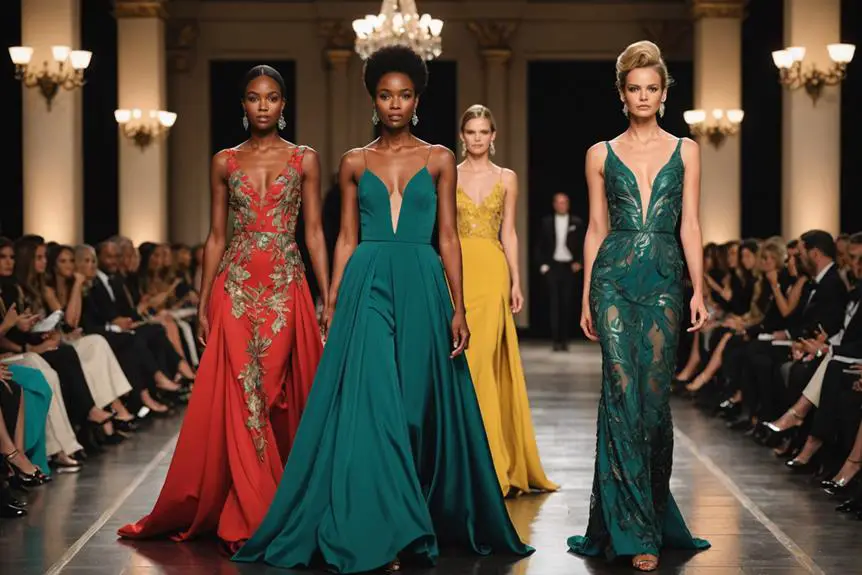The 1940s fashion scene is packed with iconic pieces that reflect a unique blend of practicality and glamour. You can't miss the shirtwaist dress, which perfectly balances femininity and functionality. Padded shoulders became symbols of strength, while wide-legged slacks shifted from utility to everyday style. Men embraced tailored suits, stitched from sturdy fabrics and often accessorized with hats and pocket squares. The classic zoot suit emerged as a bold statement of identity. Accessories like clutch purses and statement jewelry added flair to outfits. This era's styles were truly influential, and a deeper look reveals even more fascinating trends and ideas.
Overview of 1940s Fashion
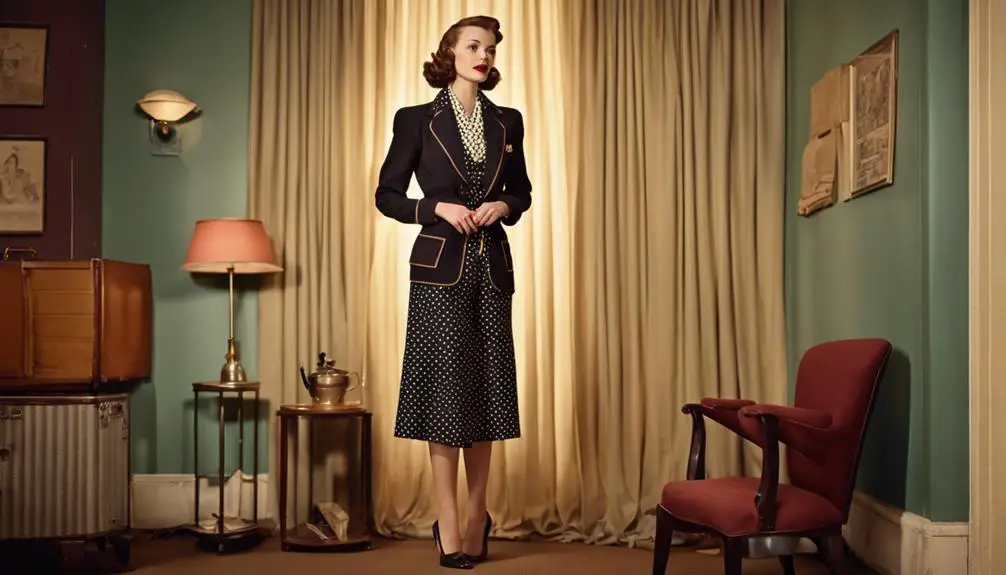
The 1940s fashion scene was a reflection of its time, shaped considerably by the impacts of World War II. As European fashion houses closed or were occupied, American designers stepped into the spotlight, creating styles that were both practical and stylish.
With wartime fabric restrictions in place, practicality became fundamental. The Regulation L-85 of 1942 limited materials and methods for clothing production, leading to the rise of Utility clothing, which emphasized functionality over extravagance.
In the early 40s, you'd notice silhouettes featuring wide shoulders, narrow waists, and knee-length hemlines. Popular styles included square-shouldered jackets and shirtwaist dresses, highlighting a strong yet feminine look. These designs showcased how women adapted their fashion to fit both their lives and the demands of the time.
However, the end of the war brought a fashion renaissance, marked by Christian Dior's New Look in 1947. This iconic style reintroduced the feminine silhouette, with voluminous skirts and sculpted shoulders that celebrated womanhood in a bold way.
Accessories also played a significant role in completing 1940s looks. Fur coats, gloves, and various styles of hats became essential elements, adding flair and sophistication to everyday outfits.
Key Women's Fashion Trends
Embracing practicality and style, women's fashion in the 1940s showcased key trends that defined the decade. One standout piece was the shirtwaist dress, which featured a fitted bodice, a defined waist, and a knee-length skirt. This dress became essential during the war years, using minimal fabric and providing a practical yet stylish option for everyday wear.
Padded shoulders also emerged as a defining characteristic of women's silhouettes. This trend emphasized strength and authority, giving women an angular look that resonated with their increasing roles in society.
The tea dress, often adorned with floral prints and puffed cap sleeves, became a beloved choice for social gatherings and afternoon tea, blending femininity with charm.
As women entered the workforce in greater numbers during WWII, wide-legged slacks evolved from practical work attire to everyday fashion. This shift reflected the changing roles of women, allowing them to navigate both work and leisure with ease.
In 1947, Christian Dior introduced his revolutionary "New Look," featuring voluminous skirts and nipped waists that marked a significant departure from wartime austerity. This new style celebrated femininity and elegance, offering women a fresh and luxurious way to express themselves post-war.
Together, these trends contributed to a vibrant tapestry of 1940s fashion, celebrating both practicality and the evolving identity of women during a transformative time in history.
Men's Fashion Highlights
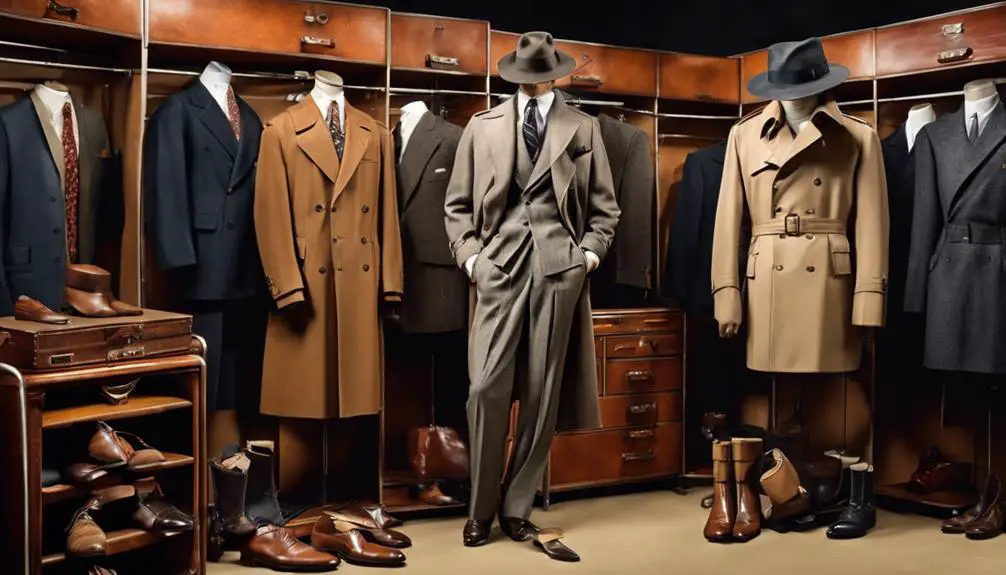
As women's fashion evolved in the 1940s, men's style also underwent significant changes, driven by practicality and wartime needs. The concept of practicality became central, with the tailored suit emerging as the "Uniform of 1942."
You'd often find these suits made from sturdy fabrics like cotton twill and gabardine, in muted colors such as black, navy, and tan. Wartime regulations limited styles, restricting double-breasted jackets and excessive pockets, but that didn't diminish their appeal.
Meanwhile, Zoot suits took the spotlight among minority working-class men. With their oversized jackets and tapered trousers, they became a symbol of defiance and individuality. However, these bold styles often faced cultural backlash, especially evident during the riots in Los Angeles.
Military influences were hard to miss, as bomber jackets and trench coats became staples in everyday wear. These pieces reflected both necessity and style, blending the ruggedness of wartime uniforms with civilian life.
As you navigated the streets, the practicality of these garments was undeniable.
To complete a well-dressed look, accessories played an essential role. Flat caps, fedoras, and classic leather shoes were crucial, emphasizing attention to detail during a time of austerity.
In the 1940s, men's fashion showcased a blend of necessity and expression, ensuring that style remained relevant, even amid challenges.
Iconic Accessories of the Era
Accessories in the 1940s reflected a blend of practicality and style, making them essential elements of any outfit. You'll find that hats were a significant part of this era, often smaller in size and crafted from felt or straw. Unique designs like snoods and turbans became popular, especially for those working in factories.
Gloves, too, were a staple accessory for women, typically wrist-length, and they beautifully accentuated the feminine silhouette of the time. Handbags also gained importance, with clutch purses coming into vogue. One standout design was Guccio Gucci's bamboo-handle bag, introduced in 1947, which perfectly combined style with functionality.
When it came to jewelry, bold designs featuring large stones and geometric shapes ruled the scene, complementing outfits and showcasing personal flair. Men's accessories weren't left behind, either. Ties and pocket squares added a touch of sophistication to any ensemble.
Military-inspired items, such as dog tags and utility belts, reflected the wartime influence that permeated civilian fashion. Don't forget the beauty accessories of the era; red nail polish and lipstick were must-haves that completed the look.
Each of these iconic accessories not only served a purpose but also allowed individuals to express their personal style during a time of both struggle and creativity. So, the next time you think of 1940s fashion, remember that it was more than just clothing—it was a complete aesthetic that told a story!
Cultural Influences on Style

The vibrant cultural landscape of the 1940s profoundly shaped fashion, intertwining the influences of Hollywood glamour with the realities of wartime life. As you explore this era, you'll notice how Hollywood stars like Katharine Hepburn and Rita Hayworth set trends that defined 1940s fashion. Hepburn popularized tailored pants, paving the way for a more practical yet chic style, while Hayworth dazzled in glamorous evening wear.
Amid the backdrop of World War II, many women were working for the war, leading to the emergence of Utility styles—functional, stylish clothing that catered to their new roles. Dungarees and trousers became staples, showcasing the changing perception of women in society. Accessories like turbans and snoods also gained popularity, offering practical solutions during fabric shortages.
In contrast, the zoot suit trend among minority working-class men reflected cultural identity and resistance, culminating in the Zoot Suit Riots of 1943, which exposed racial tensions in American society.
As the war came to an end, Christian Dior's New Look in 1947 marked a significant cultural shift. With its feminine silhouettes and voluminous skirts, it signaled a return to luxury and elegance after years of austerity.
This blend of styles—from casual to glamorous—illustrates how the 1940s fashion scene was a dynamic response to the unique social and cultural challenges of the time.
